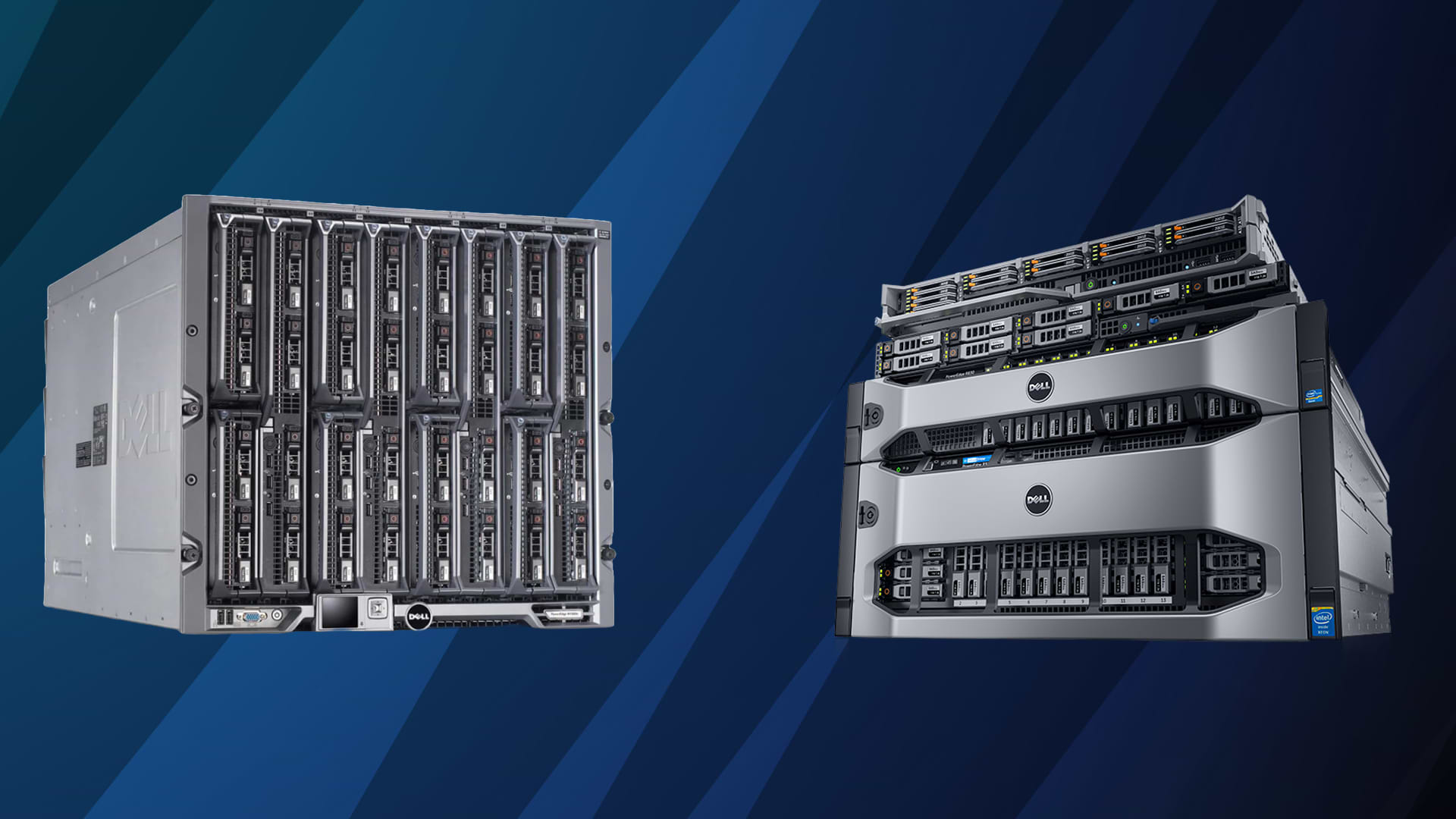
Comparing Blade Servers vs. Rack Servers: Which is Right for You?
Choosing the right server is a critical decision for any IT professional aiming to optimize their infrastructure. Two popular options that often come into play are blade servers and rack servers. This guide provides a detailed comparison to help you make an informed decision.
What Are Rack Servers?
Rack servers, also known as rack-mounted servers, are designed specifically to be mounted within a server rack. These general-purpose machines can be configured to support a wide range of requirements and are most commonly found in data centers. They are ideal for smaller deployments due to their lower initial costs and scalability.
- Scalability: Rack servers can be easily scaled by adding more units to the rack, making them highly flexible.
- Flexibility: They support various configurations and can be customized to meet specific needs, from small businesses to large enterprises.
- Cost-Effective: Rack servers are economical for businesses that require fewer servers, thanks to their lower upfront costs.
- Space-Saving: Servers are mounted one on top of the other within a rack to minimize space usage.
Browse our range of Rackmount Servers
What Are Blade Servers?
Blade servers are modular servers that allow multiple servers to be housed in a smaller area. These physically thin servers typically contain CPUs, memory, and network controllers, with additional components provided by the server chassis. They are designed for high-density environments and are often used in large data centers.
- Compact Design: Blade servers fit multiple servers into one rack, providing high density and saving space.
- High Performance: Ideal for environments requiring significant computing power, such as enterprise data centers.
- Centralized Management: Shared infrastructure for power and networking simplifies management and maintenance.
- Efficient Power Usage: Blade servers reduce power consumption due to shared resources, making them energy-efficient.
Browse our range of Blade Servers
Technical Differences Between Blade Servers and Rack Servers
- Design and Form Factor: Rack servers are standalone units mounted in a server rack, while blade servers are housed within a shared chassis in the rack. This difference in design allows blade servers to achieve higher density in a smaller physical footprint.
- Performance and Scalability: Rack servers offer flexible, incremental scalability by adding more units to the rack. Blade servers, however, provide high-density scalability with shared resources, allowing for more servers in the same amount of space.
- Cost Considerations: Rack servers have lower initial costs but may incur higher operational expenses due to individual power supplies and cooling units. Blade servers have higher upfront costs due to the need for a blade enclosure but offer lower operational expenses through shared resources.
- Management and Maintenance: Rack servers are individually managed and maintained, whereas blade servers offer centralized management and easier maintenance. Blade servers also support hot-swappable components, reducing downtime during upgrades or repairs.
- Space and Power Efficiency: Rack servers require more space and have higher power consumption per unit, while blade servers save space and are more power-efficient due to shared resources. Blade servers also reduce cabling requirements, simplifying installation and maintenance.
- Redundancy and Reliability: Blade servers often include redundant components such as power supplies and cooling fans within the chassis, enhancing system reliability. Rack servers can also have redundant features, but typically on a per-unit basis, which can be less efficient.
- Cooling and Thermal Management: Blade servers benefit from shared cooling systems within the chassis, which can be more efficient than individual cooling solutions for rack servers. This centralized cooling helps maintain optimal operating temperatures and reduces the risk of overheating.
- Networking: Blade servers integrate networking components within the chassis, reducing the need for individual network connections and improving network performance. Rack servers, on the other hand, require separate network connections for each unit, which can increase complexity and cabling.
- Installation and Deployment: Blade servers may require more complex initial setup due to the need for a blade enclosure and integrated components. Rack servers are simpler to deploy as standalone units but may require more space and cabling.
- Upgradeability: Both server types offer upgrade options, but blade servers provide a more modular approach with hot-swappable components. Rack servers allow for straightforward component upgrades, but may require shutting down the server for some upgrades.
Pros and Cons
Rack Servers
- Pros: Flexible, lower initial cost, easier upgrades.
- Cons: More space required, higher power consumption.
Blade Servers
- Pros: Space-saving, high performance, efficient power usage, centralized management.
- Cons: Higher initial cost, more complex setup.
Which Server is Right for You?
Determining whether to choose rack servers or blade servers depends on your specific needs and constraints. Rack servers are best for businesses needing fewer servers with flexible configurations and lower upfront costs. Blade servers, on the other hand, are ideal for enterprises requiring high-density computing with efficient power usage and centralized management.
Conclusion
Both blade and rack servers offer distinct advantages depending on the requirements of your IT infrastructure. Evaluate your business needs, consider the pros and cons, and choose the server type that aligns best with your goals. For more information or a consultation on selecting the right server, contact Enterasource.
Browse our Blade Servers and Rackmount Servers to find the best fit for your needs.

New comments for this post are not allowed